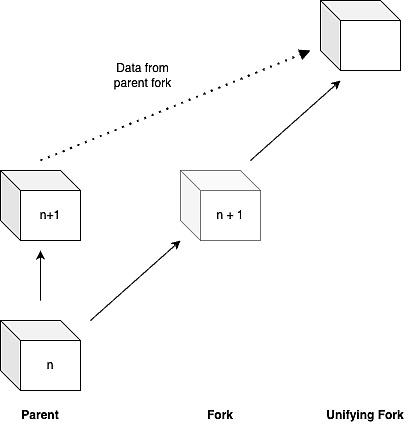Author: Gerry Wang, Source: Twitter @ArweaveOasis
This article will be the last part of the white paper interpretation. This part is not an argument for the core mechanism of Arweave, but it provides a model that allows the protocol to evolve healthily, and it is also a good supplement to the core mechanism.
We all know that there is no protocol or mechanism in the world that can always run perfectly. A good evolutionary model can ensure that the protocol can evolve better with the advancement of technology. This article gives the evolutionary mechanism of Arweave.
Over time, the network environment in which the Arweave protocol is located will inevitably change. True permanent storage requires a system that can adapt to these changes. We found that existing blockchain protocol governance methods fail to achieve both the adaptability of the protocol and the long-term maintenance of user guarantees. To address these problems, the governance mechanism deployed in the Arweave network has been improved on the basis of the traditional blockchain fork model, providing a framework for incentivizing protocol evolution. The governance procedures of the Arweave network are completelyconstitutional, they are social agreements agreed upon by community participants, allowing technology to change as needed. The full framework and the principles it references can be found on the Arweave network itself.
Mechanism Overview
At the heart of the framework is a system that activates and rewards permissionless innovation by forking the Arweave protocol. This mechanism enables a form of evolution: it provides a mechanism for generating, testing, and selecting better protocol improvements.
It allows anyone with an idea to propose a protocol improvement with a reward, which allows for a market to evolve. In essence, the mechanism functions as follows:
Innovators choose to build on previous versions of the protocol to build their new work. They choose the parent version of their innovation based on their perception of its adoption rate and applicability.
Then, the innovator creates a new version of the protocol and submits it to the community, minting an amount of new tokens that they believe represents a reasonable reward for their contribution.
Finally, community members evaluate this new improvement and choose to use it over other options if it provides enough improvement within reason.
This process results in a protocol that evolves with the environment, maximizing its utility and adaptability while minimizing dilution. It follows that in order for innovators to have their proposed new versions recognized and accepted, they need to satisfy the needs of two major market participants: protocol users and other innovators. Once they achieve this goal, they will receive rewards recognized by the market.
Incentives for Cooperation
This permissionless mechanism encourages all market participants to cooperate rather than compete with earlier versions of the protocol. Specifically, there are three reasons to incentivize anyone trying to build a permanent data storage system to participate in this mechanism:
By faithfully participating in the mechanism, innovators can expect their improved versions to become part of the lineage of permanent data storage systems. As a result, others will advance their protocols (their data and their tokens) forward.
Thus, the true cost incurred by innovators is extremely low, making it more desirable to participate in this mechanism than to create a competing service on their own.
Incentives for Dataset Unification
There is another strong incentive for innovators to maximize the value of their new evolution by merging data from forked lineages. Since a unified protocol is often more valuable than just an evolution of a forked lineage, the basic strategy for achieving this unification consists of two elements: solving technical problems for different communities and incorporating the forked data into the new evolution. If it is executed correctly, this strategy of unifying data removes the incentive for community members to continue to participate in forks, because unified data sets tend to maximize value.

Figure 1: Data from forks can be incorporated into the evolutionary version accepted by the protocol.
Innovators have an incentive to merge data from different forks on the evolutionary tree if the result of the following expression is positive:

Where:
V = Net value gain or loss resulting from incorporating data from forks.
F_M = Market capitalization of the fork.
C_D = What percentage of market capitalization would be transferred from the old fork to the new fork if the old data was incorporated.
C_N = The fraction of market capitalization that will transfer from the old fork to the new fork, regardless of whether new data is incorporated.
D_C = The cost of copying old data to the new evolution.
D_V = The intrinsic social value of including data from the fork in the new evolution.
In this equation, the value of D_C is usually smaller than F_M, and innovators are incentivized to unify the most prominent forked data. Therefore, even if a user's data is uploaded to a fork, there is a high probability that it will be unified and incorporated into the subsequent authoritative evolution in the future.
The combined effect of these incentives is that token holders will accumulate a range of assets across different evolutions, and Arweave users can expect their data to be maintained by an ever-improving set of protocols that evolve as the network evolves.
 JinseFinance
JinseFinance
 JinseFinance
JinseFinance JinseFinance
JinseFinance JinseFinance
JinseFinance JinseFinance
JinseFinance JinseFinance
JinseFinance JinseFinance
JinseFinance Samantha
Samantha cryptopotato
cryptopotato Others
Others Cointelegraph
Cointelegraph